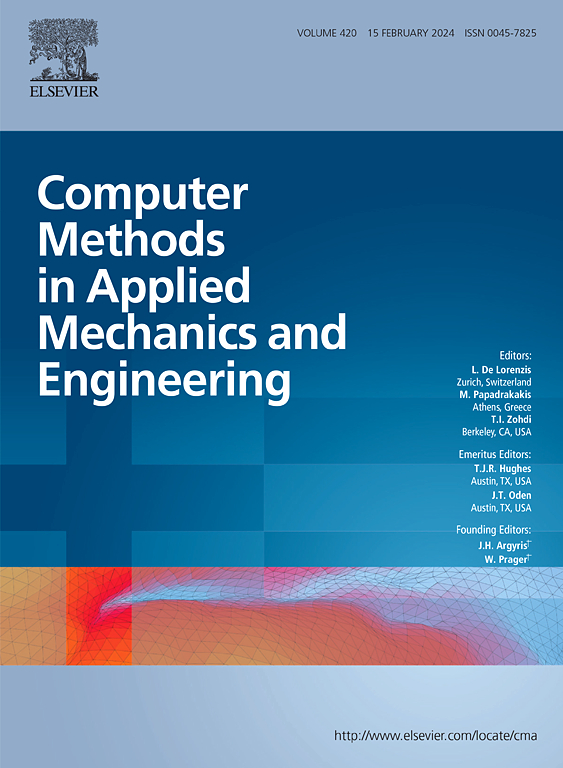A bioinspired multi-layer assembly method for mechanical metamaterials with extreme properties using topology optimization
IF 6.9
1区 工程技术
Q1 ENGINEERING, MULTIDISCIPLINARY
Computer Methods in Applied Mechanics and Engineering
Pub Date : 2025-02-19
DOI:10.1016/j.cma.2025.117850
引用次数: 0
Abstract
Inspired by the hierarchical distribution pattern of natural bamboo, this study presents a multi-layer assembly strategy for the design of mechanical metamaterials with extreme properties. Firstly, the material spatial layout is constructed by employing a bio-inspired arrangement with two types of cells distributed in a staggered manner. Based on this arrangement, a new theoretical model for evaluating material properties is then developed, which in turn determines the requirements of extreme material properties on cell properties. Finally, to obtain materials with extreme mechanical properties, a topology optimization method is adopted for the generation of cell geometries with the needed properties. The numerical experiment results indicate that compared to the homogeneous material consisting of basic cells, the Young's modulus of assembled metamaterials with similar density is enhanced by more than three orders of magnitude and up to 6273 times. Further, a series of materials with extreme Young's modulus approaching the theoretical limit are identified by geometric parameter optimization for specific topologies. Such metamaterials based on assembly strategies are capable of taking full advantage of geometric variations to enhance mechanical properties, thus having a wide range of applications in various fields such as energy absorption, impact protection, and strain sensing.

求助全文
约1分钟内获得全文
求助全文
来源期刊
CiteScore
12.70
自引率
15.30%
发文量
719
审稿时长
44 days
期刊介绍:
Computer Methods in Applied Mechanics and Engineering stands as a cornerstone in the realm of computational science and engineering. With a history spanning over five decades, the journal has been a key platform for disseminating papers on advanced mathematical modeling and numerical solutions. Interdisciplinary in nature, these contributions encompass mechanics, mathematics, computer science, and various scientific disciplines. The journal welcomes a broad range of computational methods addressing the simulation, analysis, and design of complex physical problems, making it a vital resource for researchers in the field.

 求助内容:
求助内容: 应助结果提醒方式:
应助结果提醒方式:


